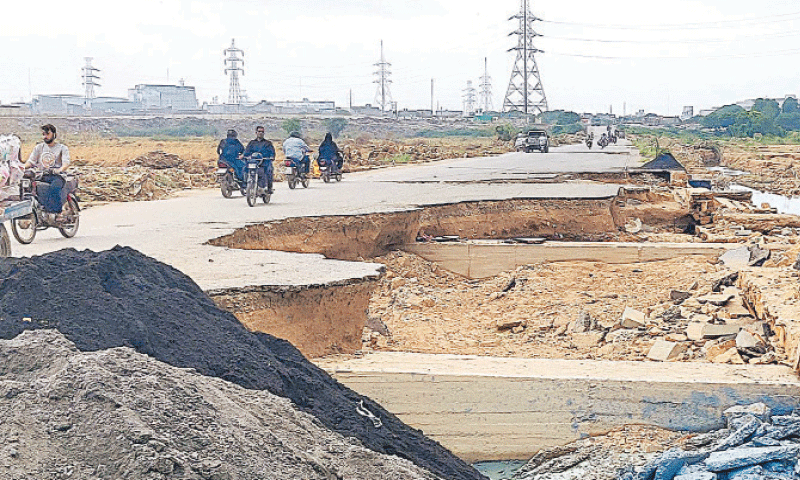•Arif Hasan says natural waterways are replaced by townships and elevated roads
•Speakers urged the restoration of drainage channels and adopted a long-term, people-friendly strategy
Karachi: The Urban Resource Center (URC) on Tuesday organized talks by experts, architects and town planner Arif Hasan and Ned professor Dr. Nonman Ahmed Flood conditions In big cities, such as Karachi Monsoon rainfall.
In his speech, Professor Ahmed, titled “Understanding the Impact of Monsoon Rainfall and Flooding in Pakistan”, noted that the usual monsoon pattern has now changed because the average rainfall in major cities such as Karachi, Lahore, Lahore, Sialkot, Fasarabad, Kasul, Kasar, etc. is all higher than the usual rainfall this year.
Professor Ahmed said: “The suffering areas are almost flooded once they rain, and citizens find themselves surrounded by water and want to know how to save their property.”
“Ironically, when the road is absorbed, the rainwater drains do not receive rainwater,” he noted. “This is because while building the road, we did not leave any room or choose the flow of water.
He added: “During the heavy rain on August 19, even vehicles brought in were cleaned or pumped from Sharea Faisal because the water entered the engine and stopped working.”
Usually all rainwater should go into the river or the ocean through the storm drain, and that won’t happen. With the help of the map, he showed how rivers such as Sutlej and Ravi in Punjab overflowed to nearby settlements.
Professor Ahmed said the government needs to develop a comprehensive strategy to manage special rainfall and flood events. He also advised them to restore natural drainage access inside and outside the city and train, equip and mobilize volunteers for emergency services.
Meanwhile, Mr Hassan said that water naturally flows from the northern or hilly areas to the southern seas, but the areas that should have flowing now have towns. A good example is Sadie town and other surrounding towns.
“You don’t interfere with nature like that. The first thing you do before building somewhere is to see if it doesn’t hinder the flow of water,” he said. “Well, even the roads here are getting higher and higher, while not allowing water to flow down.”
“URC conducted a detailed investigation of drainage pipes in 2020 and found that about 30 of the 34 smaller drains flowing into the large Mahmoodabad drainage pipes were blocked. The drainage in Mahmoodabad also had 18 points, and although only 4 happened to be open, if the remaining 14 blocks were left, only 4 happened to be open.
He also said that during the rain, water from the roofs of about 2.7 million houses in Karachi flowed to the road. However, no research or research was conducted to see how this water could be brought into the Lyari or Malir rivers.
“All the needs here are common sense to come up with long-term solutions. Here we are leaving people homeless to clean up Gujjar, Orangi or Mahmoodabad Nullah, but still can’t solve the flooding problem.”
He reminded him: “We should not ignore or ignore people when we propose solutions.” He added: “People-friendly solutions are proposed because with the warm global temperatures, the temperatures in the mountains are rising, which means that while we feel flooding here, more water will flow into the river.”
Earlier, one of the organizers, Zahid Farooq, mentioned the rainfall on August 19, which affected every citizen of Karachi in the same way.
Many of the people who attended the speech also shared their bad experiences due to the city flooding that day.
The latest video of the one-minute flooding at Nipa Chowrangi’s home court on Tuesday was also shared with viewers to show that the water has not been cleared in several areas.
Posted at Dawn on September 17, 2025



